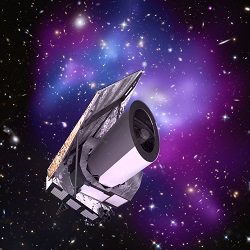Dec 8 2015
Optical Surfaces Ltd. has supplied the Laboratoire d'astrophysique de Marseille (LAM) with polished substrates to manufacture the high precision grisms that lie at the heart of a Near Infrared Spectrophotometer designed to perform red shift measurements in the forthcoming Euclid space mission by the European Space Agency (ESA).

LAM is one of the largest astrophysics public research institutes in France. It combines fundamental research in Astrophysics and the development of instrumentation for space and ground-based telescopes.
The ESA's Euclid space mission will study the dark universe. One of the on-board probes will be a Baryonic Acoustic Oscillations (BAO) device which will measure the red shift of millions of galaxies through their Near Infrared spectra. The Near Infrared Spectrophotometer instrument that forms part of the BAO has been designed to use low-resolution grisms in slit less mode to perform this massive red shift measurement.
The Near Infrared Spectrophotometer lies at the heart of making critical measurements on the Euclid mission. Consequently selection of a partner to supply the key optical components for the Spectrophotometer was a rigorous process.
Our Near Infrared Spectrophotometer design requires 4 high precision grisms mounted on a wheel to allow us to measure galaxy red shifts in two spectral bands: 0.92-1.3 and 1.25-1.85 µm. Each grism is made a 140 mm Suprasil 3001 prism, manufactured from a 150 mm parallel plate onto which a grating is etched on the polished face and then the prism is manufactured.
LAM Spokesperson
We are pleased to have produced the substrates to manufacture the grisms that will operate in the Euclid mission Near Infrared Spectrophotometer, and in particular the surface dedicated to the grating.. Apart from high surface accuracy (<10 nm RMS), our main challenge was to develop a polishing method to routinely achieve the extremely demanding near-zero sub-surface damage required by the project.
In order to achieve this, the surfaces had to be kept completely clean and free of contamination while at the same time be kept virtualy scratch-free with a microroughness well below 1nm RMS. We found that any deviation from the required cleanliness and surface quality / roughness resulted in non-perfect surfaces after chemical etching, even if the surfaces look “perfect” prior to etching. It proved that only on virtually perfect surfaces could LAM make a grating to the standards that they require.
Dr Aris Kouris - Sales Manager, Optical Surfaces Ltd.
Optical Surfaces Ltd has been producing optical components, mounted optical components and systems for more than 50 years and is now accepted as one of the world’s leading manufacturers of high-precision optics and optical systems for space and ground based telescope applications. The company’s ISO 9001-2008 approved manufacturing workshops and test facilities are deep underground in a series of tunnels excavated in solid chalk where temperature remains constant and vibration is practically non-existent. With such stable conditions testing, particularly with long path lengths, becomes quantifiable and reliable. Working with these natural advantages is a highly skilled team of craftsmen with a commitment to excellence in both product quality and customer service.
For further information on high precision optics for space applications please click here